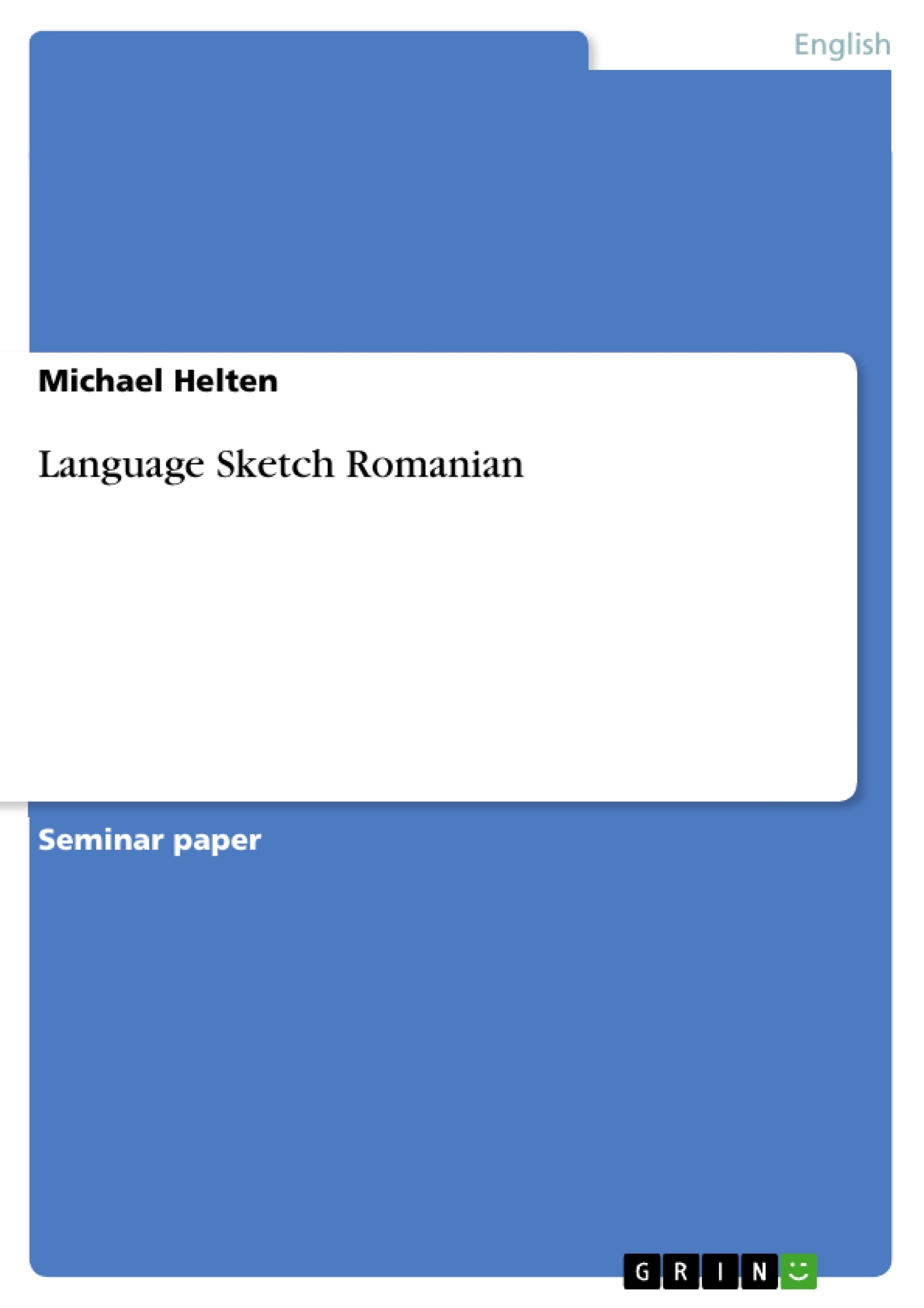Romanian is a Romance language, and as such part of the Indo-European language family. This language sketch will make an attempt at outlining Daco-Romanian. Daco- Romanian is one of four types of Balkan Romance, and among these it is by far the mostspoken – Daco-Romanian (hereafter referred to as Romanian again for reasons of simplicity) has some 21 million speakers, most of whom live in today’s Romania and Moldavia, while the other three types are spoken by only a few thousand speakers each. Romanian itself has two principal dialects, Moldavian and Muntenian. The latter is the one that underlies the literary language that developed in the 18th century and it is based on the language spoken in Bucharest, and it is also the dialect this phonetic approach will come closest to.
I. Introduction
Romanian is a Romance language, and as such part of the Indo-European language family. This language sketch will make an attempt at outlining Daco-Romanian. Daco-Romanian is one of four types of Balkan Romance, and among these it is by far the most-spoken – Daco-Romanian (hereafter referred to as Romanian again for reasons of simplicity) has some 21 million speakers, most of whom live in today’s Romania and Moldavia, while the other three types are spoken by only a few thousand speakers each. Romanian itself has two principal dialects, Moldavian and Muntenian. The latter is the one that underlies the literary language that developed in the 18th century and it is based on the language spoken in Bucharest, and it is also the dialect this phonetic approach will come closest to.
II. The vowel system
illustration not visible in this excerpt
high i ɯ u
e ɤ o
low a Table 1: Vowel Phonemes
illustration not visible in this excerpt
One of the most characteristic features of Romanian is certainly that, apart from the five vowel phonemes [a], [e], [i], [o] and [u], which can also be found in closely related languages like Spanish or Italian and in many other languages, Romanian also has the back unrounded vowels [ɯ] and [ɤ]. The high [ɯ] occurs mostly before nasals, and with an occurrence of about 4% it is the least frequent of the seven vowels. Although it is relatively close to English [ə], the high-mid [ɤ] also occurs in stressed syllables, for example in pǎr (hair), dǎ (giveimp.) and cântǎm (we sing). [ɤ] has the same quality whether it is in a stressed or in an unstressed syllable – so do all of the other vowel phonemes.
Although most distributional patterns of the sounds of Romanian will be discussed further down, I want to point out at this stage that a back unrounded vowel cannot be preceded by any semivowel or by any palatal sound.
Some (near) minimal pairs to exemplify the contrast between the seven vowels:
illustration not visible in this excerpt
The approximants [w] and [j] have not been treated yet, because I have decided to include them in the consonant chart rather than as vowels. However, they both have a semi-vowel character, [w] being the semi-vowel of [u] and [j] being the semi-vowel of [i]. The two behave most like consonants when they are in prevocalic position. When they follow a vowel they have less friction. One use of the semi-vowel [j] is responsible for one of the most interesting aspects of Romanian phonetics – the ‘final pseudo-i effect’: word-finally [j] appears after a consonant in order to create a non-syllabic sound with a palatal quality without vibration of the vocal folds. This sound is shorter than normal [j] and leads to secondary palatal articulation in the preceding consonant. Some sources do not even mention the semi-vowel itself but mention only the palatalization of the consonant. It is important to note that this effect is phonemic and the only way to differentiate between the singular and the plural forms of many nouns, e.g.:
illustration not visible in this excerpt
There are numerous diphthongs in Romanian. One element is usually a semi-vowel, while the other element is a full vowel. At least in this context it can be argued that there are also semi-vowels that correspond to the full vowels [o] and [e]. Tables 3 and 4 should help to visualize the major diphthong patterns. All other vowels to [i]/[j], all other vowels to [u]/[w], and several other combinations are possible. I have arbitrarily decided to represent the diphthongs with the symbols of two full vowels.
[...]
- Arbeit zitieren
- Michael Helten (Autor:in), 2004, Language Sketch Romanian, München, GRIN Verlag, https://www.grin.com/document/57038
-

-

-

-
Laden Sie Ihre eigenen Arbeiten hoch! Geld verdienen und iPhone X gewinnen. -

-
Laden Sie Ihre eigenen Arbeiten hoch! Geld verdienen und iPhone X gewinnen. -

-
Laden Sie Ihre eigenen Arbeiten hoch! Geld verdienen und iPhone X gewinnen. -

-
Laden Sie Ihre eigenen Arbeiten hoch! Geld verdienen und iPhone X gewinnen. -

-
Laden Sie Ihre eigenen Arbeiten hoch! Geld verdienen und iPhone X gewinnen.

